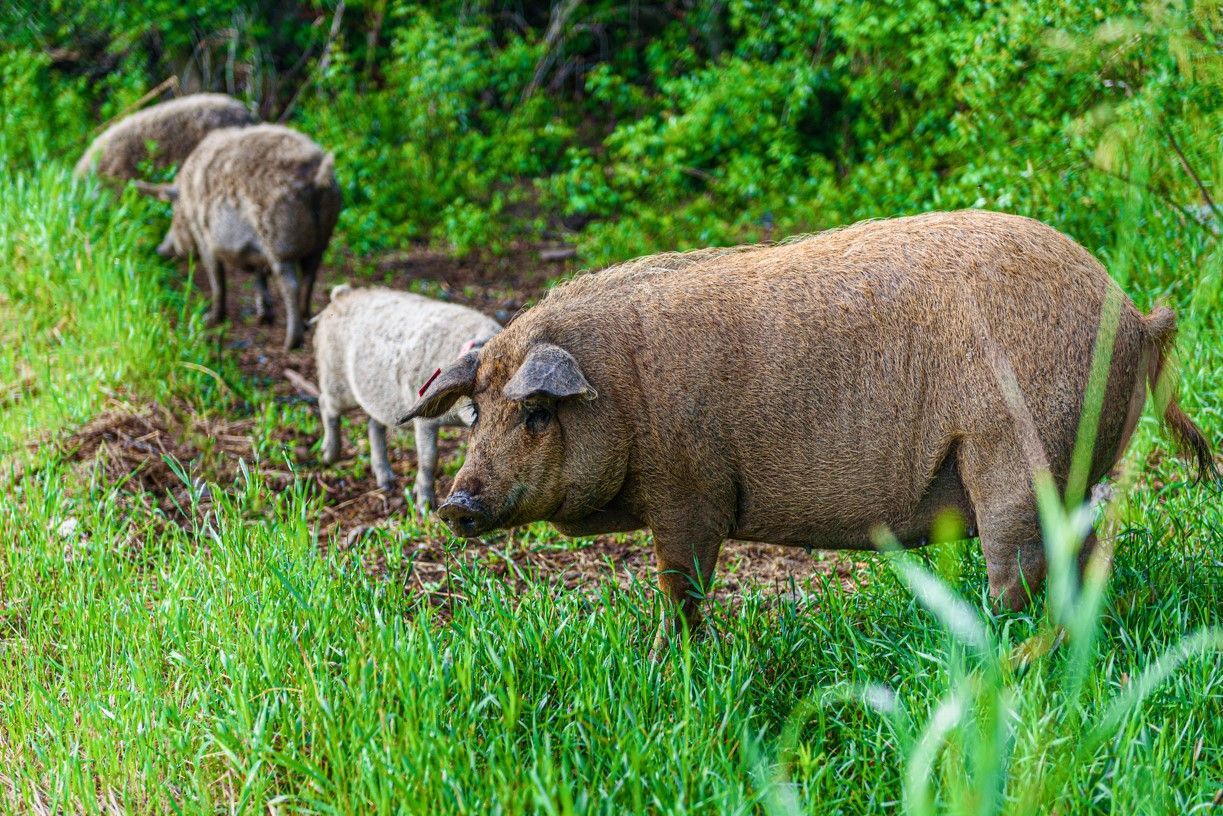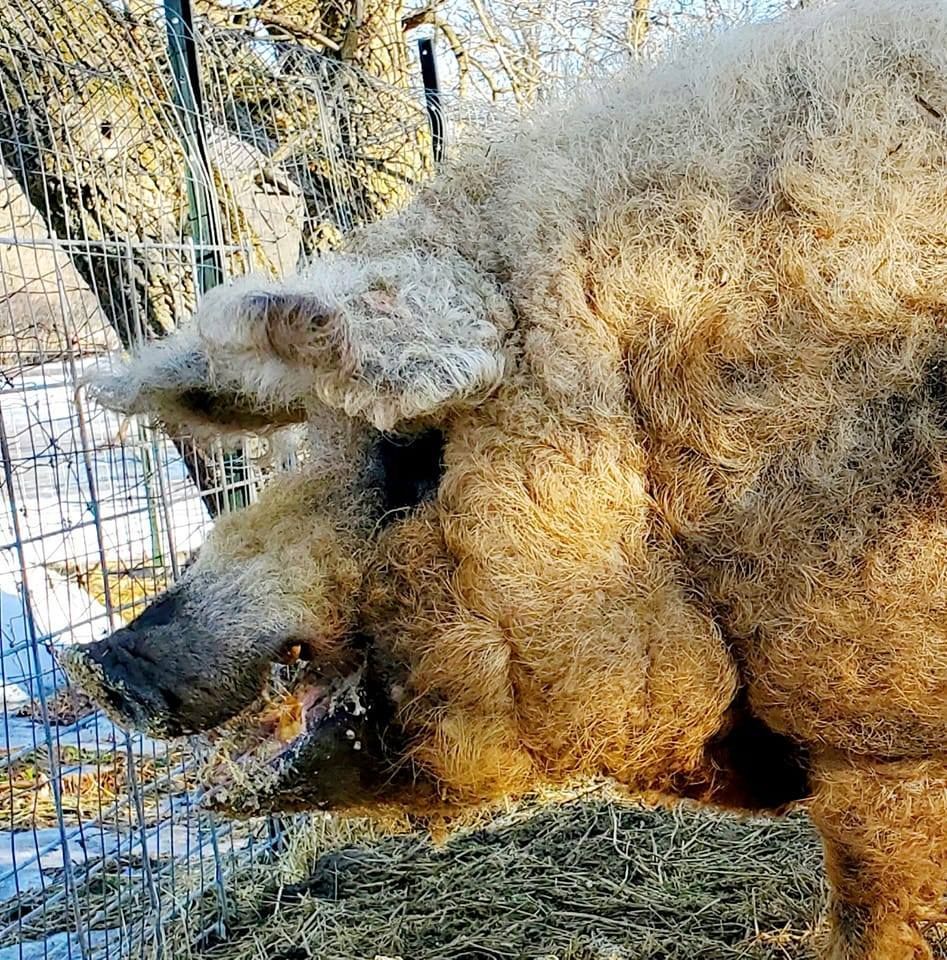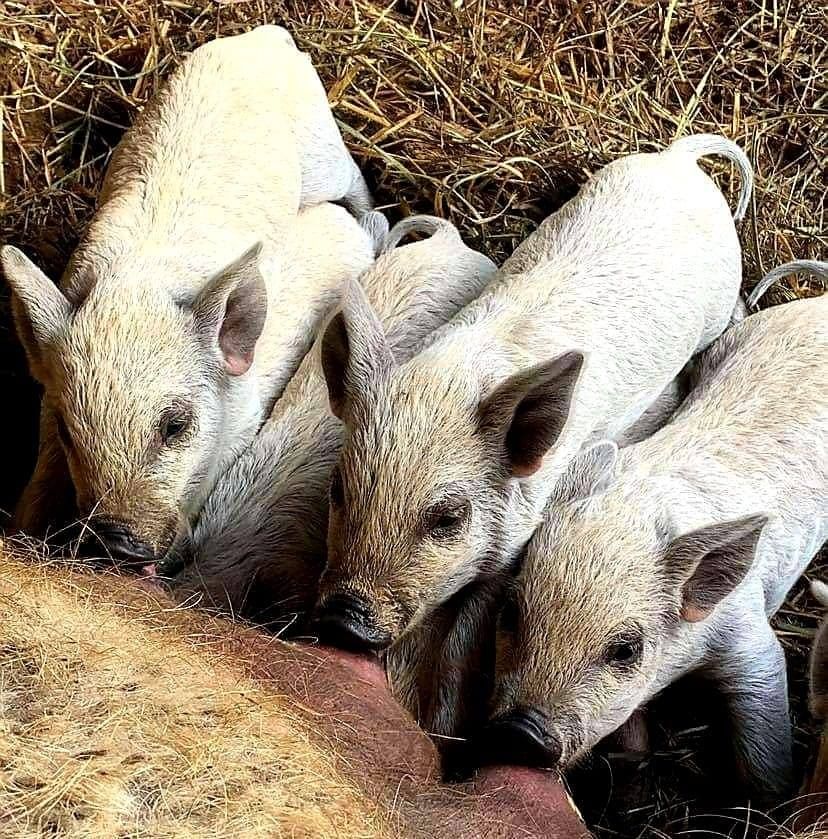Phone: 289-890-0438 | Address: 1717 County Rd. 38, Campbellford, ON K0L 1L0
About Mangalitsa Pigs
The American Mangalitsa History

Knowing the History Helps to Build the Future:
In 2007, the Swallow Belly Mangalitsa was the first colour imported from Austria to the United States. A second import from Austria took place in 2010, and the last import in 2016 came from the Netherlands.
Learn more about the history of the Swallow Belly Mangalitsa in America here.
The Blonde Mangalitsa was the second colour that was exported to the United States. Blondes came from Austria in 2010 and 2011. The first Hungarian lines came in 2014 from the Netherlands.
Learn more about the history of the Blonde Mangalitsa in America here.
The Red Mangalitsa came to the United States in 2011 from Austria. From this import, no offspring were sold. In 2014, the first Red Hungarian lines were imported from the Netherlands, which is also where the last import, in 2016, came from.
Learn more about the history of the Red Mangalitsa in America here.
Mangalitsa pigs are known for thriving even in harsh conditions, but as farmers, we always ensure proper shelter to protect them from rain or snow.
Only minimal fencing is required to keep them within a desired area. They are mostly docile and have a friendly disposition.
They lose their winter coats in the spring, making way for their cooler summer coat. Outside of their day-to-day diet, health needs and care, they usually make for a low-maintenance pig that can be raised with minimal overhead costs.
These pigs take relatively long to mature, around 15 to 18 months, compared to roughly half that time for other breeds.
Also, they should not be bred until they are at least 12 months or older, as early breeding will adversely affect the sow. Sows first give birth at around 17 months, averaging around seven piglets.
Raising Mangalitsas

Breeding

Today, more than ever, there is an increased demand to preserve the biological diversity in farm animals. These endangered native Hungarian swine breed called Mangalitsa are bred in small numbers only. This fat-type race was the most typical in the middle of the 19th century.
However, Mangalitsas nearly disappeared in the 1970s due to changing dietary habits and the breeding of modern industrial pig breeds. The valuable characteristics of Mangalitsas, like resilience, excellent adaptability to extreme housing conditions, motherliness and delicious meat taste, are widely recognized.
If you want optimal quality of fat, pure-breeding the Mangalitsa is the ideal way to go. At our farm, we are interested only in breeding purebreds.
If you are interested in breeding Mangalitsas, contact us today.
QUICK LINKS
CONTACT US
Address:
1717 County Rd. 38,
Campbellford, ON K0L 1L0
Phone:
Email:
ALL RIGHTS RESERVED | CANADIAN MANGALITSA FARMS


